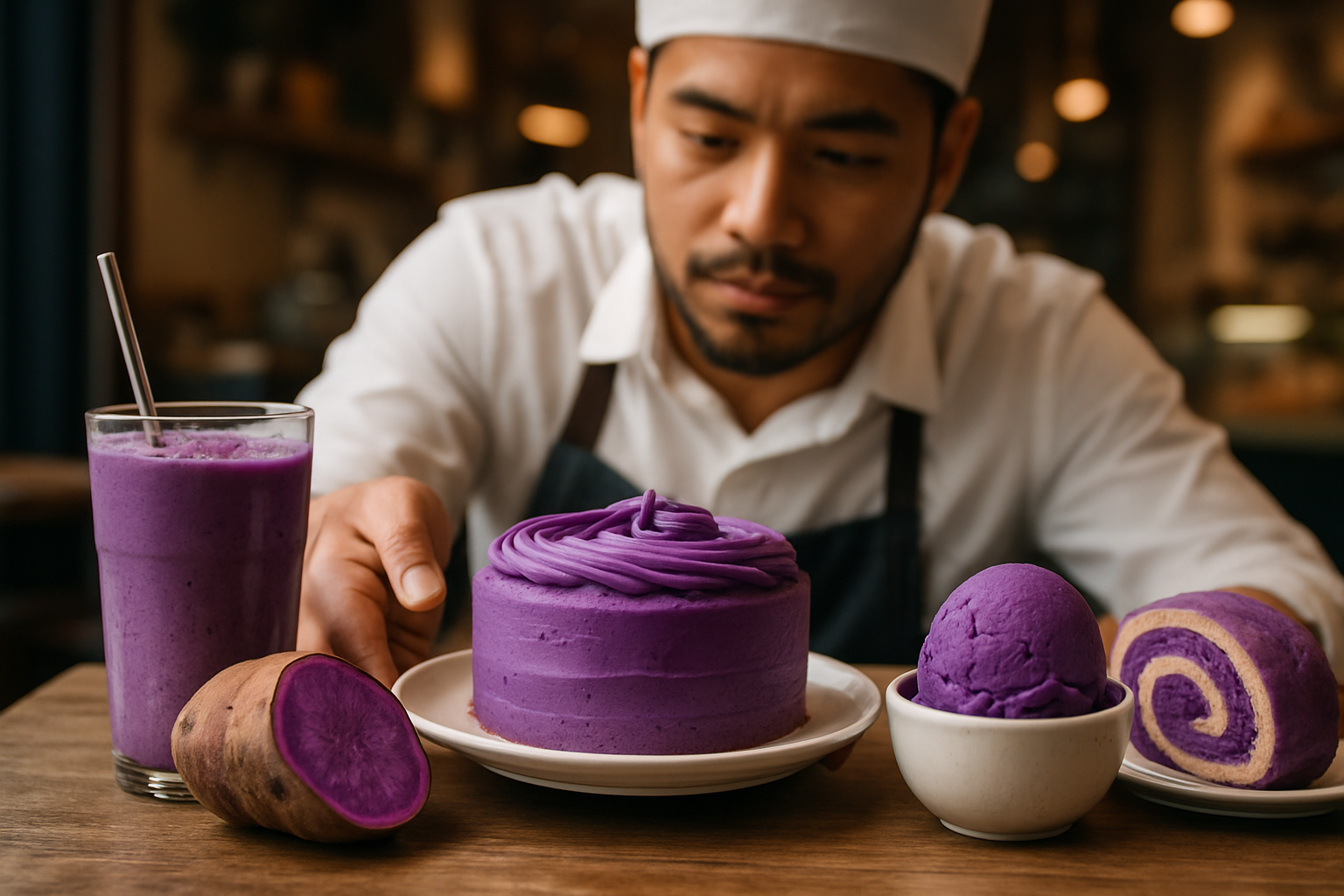Ube Revolution: The Purple Yam Taking Desserts by Storm
Discover the vibrant world of ube, the purple yam that's transforming dessert menus worldwide. This Filipino staple is captivating taste buds with its striking color and subtly sweet, nutty flavor. From ice cream to pastries, ube is proving that it's more than just a passing trend – it's a versatile ingredient that's here to stay.

The Instagram Effect
In today’s social media-driven world, the visual appeal of food is almost as important as its taste. Ube’s stunning purple color has made it an Instagram sensation, with food bloggers and influencers showcasing everything from ube lattes to ube cheesecakes. This exposure has catapulted ube from a niche ingredient to a global phenomenon, sparking curiosity and demand among consumers eager to try the next big thing in food trends. As a result, ube has found its way into mainstream cafes, bakeries, and even ice cream parlors across the globe.
Versatility in Desserts
One of the reasons for ube’s rising popularity is its incredible versatility in desserts. Ube can be incorporated into a wide range of sweet treats, each showcasing its unique color and flavor. Ube ice cream, with its creamy texture and vibrant hue, has become a particular favorite. Bakeries are experimenting with ube in cakes, macarons, and doughnuts, while beverage shops are creating ube-flavored milkshakes, smoothies, and bubble teas. The possibilities seem endless, with innovative chefs constantly finding new ways to incorporate this purple powerhouse into their creations.
Health Benefits and Nutritional Value
Beyond its aesthetic appeal and delicious taste, ube boasts an impressive nutritional profile. Rich in complex carbohydrates, fiber, and antioxidants, ube offers a healthier alternative to traditional dessert ingredients. It’s also a good source of vitamins C and E, potassium, and calcium. As consumers become more health-conscious, the appeal of a naturally colorful and nutritious ingredient like ube continues to grow. This has led to its inclusion in various “superfood” products and health-focused dessert options.
Fusion and Innovation
As ube gains popularity in Western markets, chefs and food manufacturers are finding innovative ways to incorporate it into fusion dishes and products. Ube-flavored croissants, for instance, blend French pastry techniques with Filipino flavors. Ube-infused cocktails are appearing on trendy bar menus, while ube-flavored popcorn and chocolate bars are hitting specialty food stores. This fusion approach not only introduces ube to new audiences but also celebrates cultural diversity through food, creating exciting culinary experiences that bridge different culinary traditions.
Ube Insights: Tips and Facts
• Ube is different from taro, another purple root vegetable often confused with it
• Fresh ube can be challenging to find outside of Asia, but ube powder and extract are widely available
• Ube pairs well with coconut, creating a popular flavor combination in many desserts
• The purple color of ube can vary in intensity, depending on the variety and processing method
• Ube is sometimes referred to as “purple yam” or “Filipino yam” in English-speaking countries
In conclusion, the ube revolution is more than just a passing fad. This vibrant purple yam has captured the hearts and palates of food lovers worldwide, offering a unique combination of visual appeal, versatile flavor, and nutritional benefits. As chefs continue to innovate and consumers embrace new culinary experiences, ube is poised to become a lasting fixture in the global dessert landscape. Whether you’re a curious foodie or a seasoned chef, exploring the world of ube promises to be a delightful and colorful adventure.





